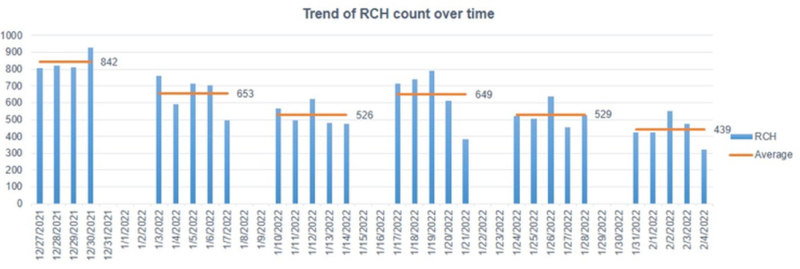A graduate of the Industrial Engineering master's program at the University of Houston's Cullen College of Engineering is now leading a team optimizing the operational dynamics at DHL as the firm continues to grow in size and revenue.
Viraj Lele earned his Master of Engineering in 2017, after completing his undergraduate studies at the University of Mumbai in 2014 with gold medalist distinction. He has also since earned a Master of Science degree from Penn State in 2020. This knowledge has merged with his experience in the field in order to be a valued member to perform critical roles at DHL Supply Chain.
“Based on today’s life, one of the forefront industries is supply chain logistics and management, where the contest is ferocious,” he said. “Breakthroughs are achieved not just because of the front line associates but also due to the team working in the background, and one such role which makes it possible is an Industrial Engineer, which I'm employed as.”
Lele chose the University of Houston because it had a highly ranked program of faculty and researchers in IE. The amenities, like instate scholarships and the campus, provide great growth opportunities in the fifth largest metro area of the United States. Lele was also the recipient of the Scott T. Poage Merit scholarship, which was awarded to him in his graduating semester. It is named in honor of the emeritus professor and former chairman of the Industrial Engineering Department.
Lele's work has been recognized in several different ways. He was interviewed for an article on Artvoice in January 2023 about the growth of DHL. Lele also contributed three papers to the International Journal of Science and Research one of which was while at UH.
Taking Thomas C. Chen’s course on Supply Chain Management was one of the important events making Lele's journey align in its current successful direction. With his support, Lele wrote a research paper that was published and is now used by industry professionals in fixing their transportation modules.
The Artvoice article contains a case study that Lele likes to use to illustrate the problems a business can run into even as it expands. In 2022, their facility supporting the wine and alcohol business in the eastern and central counties of Pennsylvania acquired a new business. As a result, the facility more than doubled its output, from 20,000 to more than 50,000 cases per day.
However, this created a sort of “good problem” for the facility. The large volume of replenishments caused delays in product delivery due to picking – the selection and retrieval of items for an individual orders – as well as requiring more labor.
From the skills and knowledge he acquired at UH, Lele performed velocity analysis of the Stock Keeping Units (SKUs) and identified the high number of heavy volume SKUs being directed to the carton flow (CF) and hand stack (HS) locations by the system, which caused high replenishments. The purpose of CF & HS locations was to acquire low volume SKUs. As a consequence their replenishments took until noon on a heavy picking day. This impeded operations as a delay in filling locations with cases made the pickers waiting for their product.
To address this issue, Lele studied the pick pattern for each product and identified its pick velocity. The objective was to have less products go to CF & HS locations. Lele worked with the IT team in building a velocity tool of SKUs that were high, medium and low picked. Later, he slotted products based on their velocity in different regions.
The solution as implemented involved studying velocity of high, medium and low picked SKUs for their trend over a past year; slotting high picked SKUs in bulk regions and permanent big locations; and relegating the low picked SKUs to dynamic CF & HS locations.


The result can be seen on these two graphs. Due to improved slotting, the average count dropped from 842 in December 2021 to 439 by February 2022. In the months after that, the average continued to decrease to 215. The improved slotting and lowering replenishment counts, initially saved around 3 hours but towards the next half of the year the number scaled to six hours thereby saving close to $1 million overall with on-time delivery.
Lele is currently leading other projects with managing supervisors, operations managers and associates in making their facility move towards LEAN processes. He likes to keep a mantra in mind when confronting problems.
“When challenges are high, only achievers rise above it,” he said.
